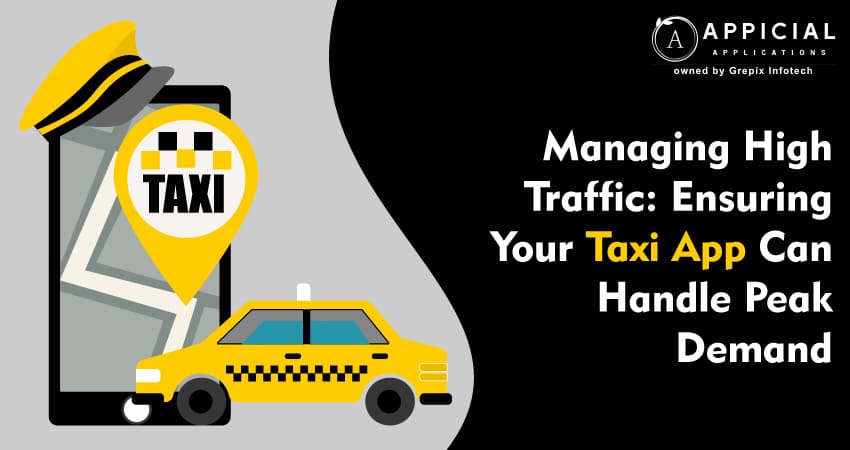
Managing High Traffic: Ensuring Your Taxi App Can Handle Peak Demand
Managing high traffic in a taxi app is a multifaceted challenge that requires strategic planning, robust infrastructure, and a focus on user experience. By understanding peak demand patterns, leveraging scalable technologies, and continuously monitoring performance, you can ensure your taxi app remains reliable and efficient, even during the busiest times. Investing in these areas not only enhances user satisfaction but also strengthens your position in a competitive market.
Remember, the goal is not just to handle high traffic but to provide a seamless and enjoyable experience for your users, regardless of demand levels. With the right approach, your taxi app can become a trusted and indispensable tool for commuters everywhere. Below is an in-depth exploration of strategies and technologies to optimize taxi app performance during high-traffic periods.Managing high traffic in a taxi app involves strategic planning, robust infrastructure, and a focus on user experience. By understanding peak demand patterns and leveraging scalable technologies, such as cloud-based solutions and microservices architecture, you can ensure your taxi app remains reliable and efficient, even during peak times. Implementing real-time data analysis, load balancing, and database optimization is essential for efficiently handling large volumes of user requests and data. Furthermore, continuous monitoring and testing ensure the app performs well under stress. By investing in these technologies and strategies, you enhance user satisfaction and strengthen your market position, making your taxi app a dependable choice for commuters.
Understanding Demand in Taxi Apps
1 Identifying Peak Times
Demand in taxi apps fluctuates based on time, day of the week, local events, and seasonal trends. For instance, demand spikes during rush hours, holidays, and special events. Understanding these patterns through data analytics helps anticipate and prepare for high traffic.
2 Real-time Data Analysis
Utilizing real-time data analysis allows for immediate response to changing traffic conditions and demand. This involves monitoring app activity, ride requests, and driver availability constantly to manage resources effectively.
Scalable Architecture
1 Cloud-Based Solutions
Adopting cloud-based infrastructure enables scalability and flexibility. Cloud services like AWS, Google Cloud, or Azure provide tools to scale resources up or down based on real-time demand, ensuring that the taxi app remains responsive and efficient.
2 Microservices Architecture
Using a microservices architecture can enhance an app’s scalability. This approach divides the app into smaller, independent services that can be scaled individually, allowing for more precise resource management and isolation of issues without affecting the entire system.
Load Balancing
1 Efficient Load Distribution
Implementing load balancers distributes user requests evenly across servers, preventing any single server from becoming a bottleneck. This is crucial during peak periods to maintain speedy processing and service availability.
2 Geographical Load Balancing
This involves routing requests to the server closest to the user’s location, reducing latency, and speeding up response times, which is vital during high-demand periods.
Database Optimization
1 Database Scalability
Ensuring the database can handle large volumes of queries and transactions is essential. Techniques such as database sharding, where data is partitioned across multiple databases, can help manage more queries efficiently.
2 Caching Strategies
Implementing caching can significantly reduce database load by storing frequently accessed data in memory. Redis or Memcached can cache data such as driver locations and popular destinations.
Efficient Resource Allocation
1 Dynamic Pricing and Incentives
Dynamic pricing algorithms adjust fares in real time based on demand and supply. This not only helps in managing customer flow but also incentivizes drivers to be available during peak times.2 Predictive Resource Allocation
By using machine learning models to anticipate demand hotspots, drivers can be preemptively dispatched to these areas, cutting down on wait times and evenly distributing the load throughout the network.
Also Read: Geofencing in Taxi Apps: What It Is and How to Use It
User Experience Optimization
1 Robust App Design
Ensuring the app interface remains responsive under high load is crucial. Optimizing front-end components for performance and conducting regular stress tests can help identify potential bottlenecks before they impact users.
2 Communication Channels
Effective communication tools within the app, such as notifications about expected wait times and dynamic updates, help manage user expectations during high-demand periods.
Testing and Monitoring
1 Continuous Testing
Regular load testing and performance evaluations help ensure the app can handle high traffic. Tools like JMeter or LoadRunner can simulate a large number of users to test the app’s robustness.
2 Real-time Monitoring and Alerts
Monitoring systems like New Relic or Datadog provide real-time insights into app performance and system health. Having alerts set up for unusual performance helps deal with problems as soon as they appear.
Conclusion
Managing high traffic in a taxi app is a multifaceted challenge that demands strategic planning, robust infrastructure, and a relentless focus on user experience. By understanding peak demand patterns and leveraging scalable technologies like cloud-based solutions and microservices architecture, you can ensure your app remains reliable and efficient, even during the busiest times. Continuous monitoring and real-time data analysis are crucial for immediate response to fluctuating demands, helping to maintain seamless operations and high user satisfaction.
At Appicial Applications, we specialize in developing scalable and efficient taxi app development tailored to meet these exact challenges. Our expertise in cloud infrastructure, load balancing, database optimization, and user experience design ensures that your app not only handles high traffic gracefully but also provides an enjoyable experience for your users. We implement advanced strategies like dynamic pricing, predictive resource allocation, and real-time monitoring to keep your app ahead of the curve.
Investing in these areas not only enhances user satisfaction but also strengthens your position in a competitive market. Remember, the goal is not just to manage high traffic but to turn it into an opportunity for growth and customer loyalty. With Appicial Applications as your development partner, your taxi app can become a trusted and indispensable tool for commuters everywhere, capable of delivering exceptional service regardless of demand levels.
Let us help you navigate the complexities of high-traffic management and elevate your taxi app to new heights of success.
Looking out to start your own venture like Uber? Try out our HireMe Uber Clone, the easiest way to kick-start your taxi business.






